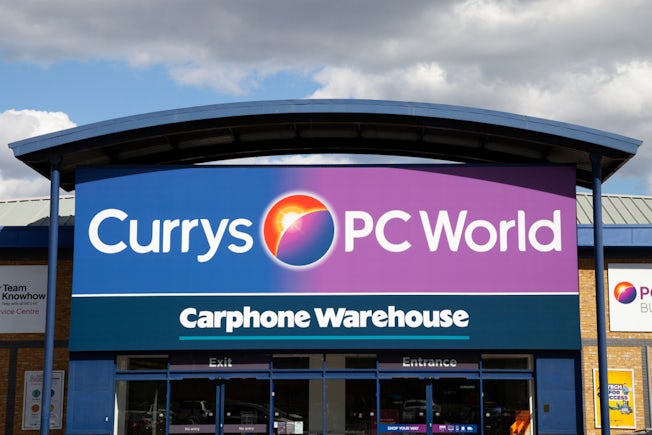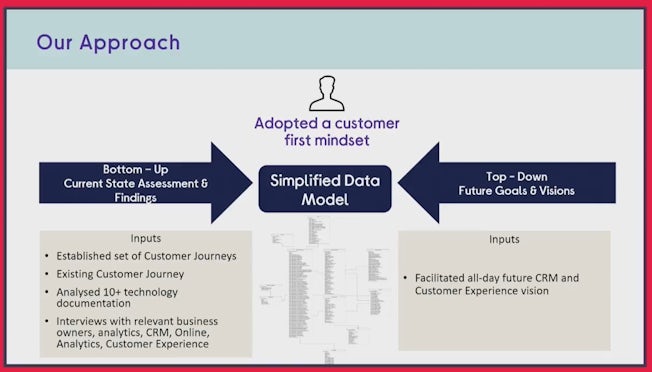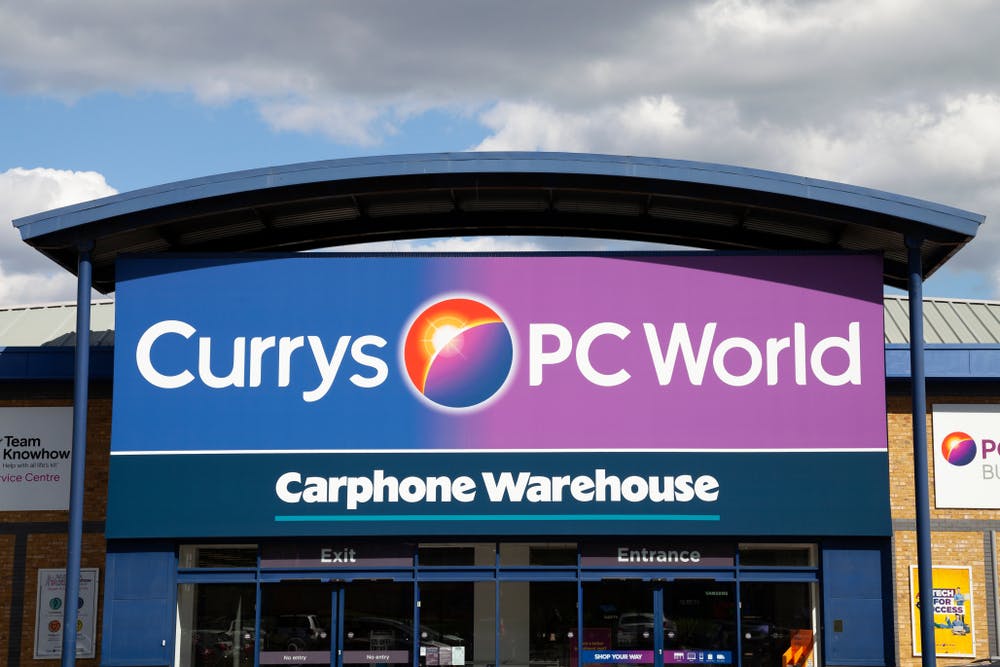Saul Lopes is the Head of CRM for the UK division of Dixons Carphone, with responsibility for the Currys PC World UK and Carphone Warehouse websites. Since he joined the business in December 2018, Lopes has set about transforming Dixons Carphone’s approach to CRM and, by extension, its approach to its customers.

In an insight-packed presentation that closed the second day of Econsultancy Live 2020, Lopes walked attendees through some of the highlights of Dixons’ ‘people-centric’ CRM transformation, including how his team succeeded by reversing the traditional approach to personalisation; how they simplified their approach to data and set themselves apart during the pandemic; and what his secrets were for getting stakeholders on board with a transformation project and ensuring success.
Upending the approach to personalisation
Lopes contends that conversations about improving CRM often zero in on personalisation, which takes the most effort and resources to execute – and will only be appreciated by those customers who actually interact with a brand’s communications. In other words, all of your effort is being focused on the smallest possible area of opportunity.
“With so many things and so many priorities, how should we focus first on the low-hanging fruit and then on what actually drives value?”
The larger percentage of customers who might receive your communications but not open them or interact, or who aren’t subscribed to your communications at all, represent a much larger opportunity that is being ignored if you go straight to focusing on personalisation.
Lopes explained that by ‘flipping the triangle’ of CRM upside-down, so that the top priority was those customers who weren’t yet subscribed to communications, followed by those who were subscribers but were not engaging, his team could still make gains in CRM revenue and conversions, while buying themselves time to eventually get personalisation right.
“If you think about it, if you just grow the number of subscribers in your base by 10 or 20 percent, focusing on prospecting opportunities, you’re going to drive more CRM revenue,” he said. “This is why I always like to change the conversation from CRM transformation driving personalisation to a conversation around driving revenue and driving conversion.
“Then you can focus on the people who are opening your emails. If you increase that open rate [from 20%] to 21 or 22%, and you keep all else equal, you have a lot more people hitting your website, and you have a lot more people actually converting.” Dixons achieved this by implementing new AI-oriented tools, improving subject lines, and improving their ‘Hero Copy’ to drive up open rates.
By focusing on these two segments of the customer base, which were the “low-hanging fruit”, first, the Dixons team were able to grow the potential audience that they could target with personalisation, while also ensuring that they didn’t rush into personalisation, taking as much time as was needed to, in Lopes’ words, “really bring in those excellent experiences, those one-to-one connections you want to build with your customers”.
Building a Simplified Data Model
Lopes described how he was able to build momentum within the CRM department by achieving some “quick wins”, such as implementing two new technology platforms, Phrasee and Movable Ink, that allowed Dixons to optimise their communications and increase conversion rate without changing their tech stack. They also achieved some wins for key stakeholders, which helped to build trust in the team’s ability to deliver.
All of this laid the groundwork for tackling a much bigger digital transformation project: transforming the organisation’s use of data.
Like many major PLCs, Dixons Carphone has made a number of acquisitions over the course of its existence, but the data from those different brands and entities is often siloed. To begin with, therefore, Dixons started using Adobe Campaign Manager, which merged data from different parts of the business like Carphone Warehouse, Currys PC World, and iD Mobile into one omnichannel campaign management platform.
Next, the team set about building a simplified approach to data, known as the Simplified Data Model. “Data is a very complex subject, and there can be a lot of data complexity in the background,” said Lopes. “But business users don’t need to see that complexity. The Simplified Data Model is all about creating a really simple dataset that business users can understand – so that my team could actually drive better experiences and focus on generating better communications for our customers.”
The team took the customer as their starting point, and looked for the data attributes that unlocked the most value and potential for the customer experience. They also audited their existing campaigns and customer journeys to work out which data fields they actually made use of. “You’ll be surprised that out of the 1,800 data variables that we had available, we were only using intensively around 25 to 30 data variables,” said Lopes.
His advice for marketers trying to simplify their approach to data? “Don’t get overwhelmed by the amount of data the business has. Just focus on the data that you’re actually using.”
Next, the team turned their attention to their future ambitions for their CRM program and the customer experience, integrating this vision into the Simplified Data Model. The net result was that an initial dataset made up of 300 different data tables with 1,800 variables was simplified into 11 flat data tables and around 274 variables.
“Just focusing on the data points that drive customer value in order for us to improve our comms [meant that] no longer are my team focused on trying to find the data, trying to mine the data,” Lopes said. “Instead, they can heavily focus on improving the communications for our customers, improving our programme, and being a little bit more creative.”

Dixons Carphone combined an assessment of their current data usage with a vision of how they anticipated using data for future CRM projects to create their Simplified Data Model.
Welcome Journeys and Key Customer Moments
A large part of Dixons’ brand ethos is centred on not just selling technology to its customers, but helping them to understand how to get the most out of it.
This formed the basis for improving the overall customer experience at Dixons, starting with something that Dixons calls the Welcome Journey: an omnichannel journey focused around ‘key customer moments’, which were aimed at meeting customer needs at different points in their purchase journey, particularly at moments that were notorious pain points or areas of frustration.
“For example, when you buy a large screen TV, people always underestimate just how hard it is to pin it against the wall,” said Lopes. “So why not give customers a little nudge about our installation service and have a professional do it?
“Or how about early ownership pain points? If you just bought that large screen TV, you probably want to upgrade your broadband so that you can watch Netflix in HD.” By honing in on these moments and alleviating the potential pain points, Dixons could improve their relationship with the customer and help them to have a better experience with the technology they had just bought. The brand created engaging videos with insider tips from employees that aimed to bring their expertise to life and put them “front and centre” of the CRM programme.
One of the informational videos created by Dixons, under the Currys PC World brand, which explores how to do more with a smart TV set.
Throughout the Welcome Journey, said Lopes, the focus was all about serving the customer better – until the very last communication, when they would go for the upsell. “That might be, ‘If you’ve bought a large screen TV, have you thought about the soundbar?’” said Lopes. “But we only do that after we really focus on servicing the customer in the best way.”
During the Covid-19 lockdown, Dixons also introduced a major innovation in the way it served customers, in the form of its virtual advice service, ShopLive. With all of its stores shut up for the foreseeable future, the brand looked for a digital way to deliver that ‘store colleague’ expertise for customers shopping online.
What began as a 25-employee pilot is now a more than 2,000-person operation that connects customers with Dixons experts via a video link to answer their questions and give advice. “All customers can just go up to our website and talk to a real life human,” Lopes said. “Because we all have those little doubts when we’re buying our large screen TVs – or about which dryer or which oven we should buy. We all want that human touch and that human expertise to come to life.”
Making a success of your transformation project
Based on his experience of undertaking transformation projects at Dixons, Lopes offered a number of tips for marketers on how to ensure that their efforts are successful.
1) Take an iterative approach to delivery
“Instead of delivering the whole project in one big bang, we took a very agile and iterative approach to delivery,” said Lopes. The team divided their project into lots of smaller steps, with a different ‘benefit profile’ associated with each one – so that each time they completed a step, they would have a success story to bring back to the business.
This also meant that any setbacks would seem less like a setback for the entire project as a whole, and were easier to couch in terms of the successes that the team had already achieved.
“Imagine if you get a five out of five with the first step, a five out of five with the second step, but only a three out of five with the third step – you still have the previous steps of great stories and great performance to tell, so that when you do the third step, people are a little more receptive, and they help you out more.”
2) Start with a quick success story
“Be strategic when you’re thinking about starting your project,” Lopes advised. “How do you pick that one simple thing that’s actually quick to implement and has high business value?”
For Dixons, the quick ‘success story’ was their new abandon basket emails: a high-impact, high-revenue cost-saving initiative that the team was able to deliver early on. By using propensity modelling, the team introduced a Similar Products feature into the email that would show the customers a related item they might be interested in buying, and also included live delivery information to nudge the customer towards a purchase.
With the new abandon basket emails, the team delivered a 67% increase in email click-through rates, a 147% increase in revenue per email send, and more than £500,000 of cost savings. “What a good story to go back to our stakeholders with,” said Lopes. “This kick-started our project in such a good way, and really got all of our senior stakeholders on board with our project and believing in what we were doing.”
3) Constantly celebrate successes with your stakeholders
On a similar theme, Lopes emphasised the importance of always celebrating successes with senior stakeholders. “Because hey – we all know that projects have their downturns. My project wasn’t perfect; no-one’s project goes perfectly. But if you celebrate all those big successes, and then have a little bit of downturn, your stakeholders will go a little bit easier on you when things go badly, and help you out more.”
4) Find ways to bring your project to life
When you’re in the midst of delivering a project, said Lopes, it’s easy to get caught up in the delivery and forget about communicating it to the rest of the business. However, it’s important to balance that delivery with finding engaging ways to bring your project to life for stakeholders and other business members and celebrate its successes.
“What ends up happening is that we only go back to our stakeholders when something really negative happens,” Lopes explained. “So, we always need to balance maintaining that communication and celebrating success with a high standard of delivery.”
To get the rest of the business on board with what they were doing, the Dixons CRM team created a video (complete with a rousing soundtrack) that outlined the problem they had set out to solve, how they were solving it by putting Dixons’ employee expertise front and centre, showing how their new technology played into things, and outlining the positive results so far.
5) Treat suppliers like part of the team
“The only way that we’re successful is when we and our partners work together, and we ensure that they’re successful, and they in turn ensure that our projects are successful,” said Lopes.
He noted the discrepancy between how businesses might treat a member of their team who is struggling, versus a vendor that is not delivering successfully: “If a member of your team fails, and they can’t get something done, what you usually do is go to that team member and help them with the problem. When it comes to a vendor, we tend to like to point fingers and say, ‘Why haven’t you delivered this?’ and ‘Why haven’t you done that?’ But I think that’s the wrong approach for digital transformation.
“When the vendor fails we have to help them with that failure, in exactly the same way that our partners help us when we fail.”
This approach includes focusing “one hundred percent” of the team’s energy on solving any problems that arise, instead of trying to lay blame at the vendor’s doorstep. The Dixons team also hold monthly meetings with their vendors, in order to work as a single combined team instead of separate entities, and to recognise the major role that each vendor plays in the company’s transformation.
Lopes also underscored that the “best deliverable” from all of the work that had been put into Dixons’ CRM transformation was a happy, energised, excited CRM team who were engaged with the work they were doing and felt as though it had a purpose. “By bringing in that tech, by bringing in this innovation agenda, we were able to increase our staff engagement scores – and by increasing engagement, you increase productivity and have better customer outcomes.”
Digital Transformation Monthly – December 2020




